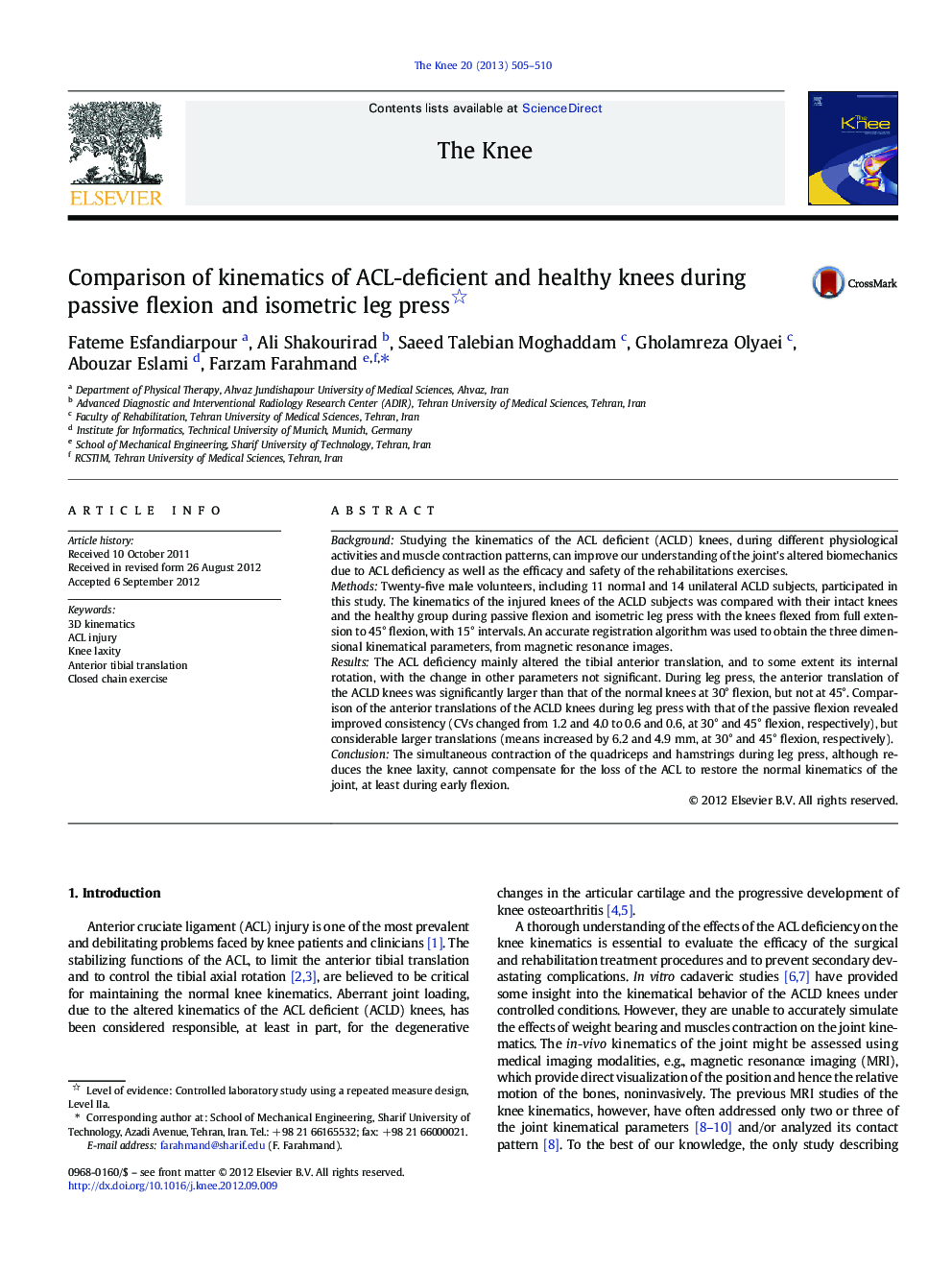| Article ID | Journal | Published Year | Pages | File Type |
|---|---|---|---|---|
| 4077580 | The Knee | 2013 | 6 Pages |
BackgroundStudying the kinematics of the ACL deficient (ACLD) knees, during different physiological activities and muscle contraction patterns, can improve our understanding of the joint's altered biomechanics due to ACL deficiency as well as the efficacy and safety of the rehabilitations exercises.MethodsTwenty-five male volunteers, including 11 normal and 14 unilateral ACLD subjects, participated in this study. The kinematics of the injured knees of the ACLD subjects was compared with their intact knees and the healthy group during passive flexion and isometric leg press with the knees flexed from full extension to 45° flexion, with 15° intervals. An accurate registration algorithm was used to obtain the three dimensional kinematical parameters, from magnetic resonance images.ResultsThe ACL deficiency mainly altered the tibial anterior translation, and to some extent its internal rotation, with the change in other parameters not significant. During leg press, the anterior translation of the ACLD knees was significantly larger than that of the normal knees at 30° flexion, but not at 45°. Comparison of the anterior translations of the ACLD knees during leg press with that of the passive flexion revealed improved consistency (CVs changed from 1.2 and 4.0 to 0.6 and 0.6, at 30° and 45° flexion, respectively), but considerable larger translations (means increased by 6.2 and 4.9 mm, at 30° and 45° flexion, respectively).ConclusionThe simultaneous contraction of the quadriceps and hamstrings during leg press, although reduces the knee laxity, cannot compensate for the loss of the ACL to restore the normal kinematics of the joint, at least during early flexion.
